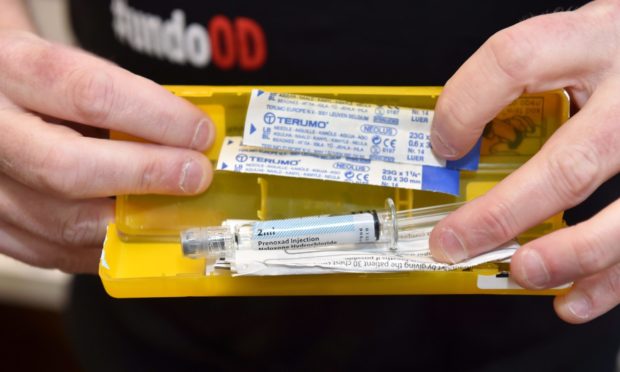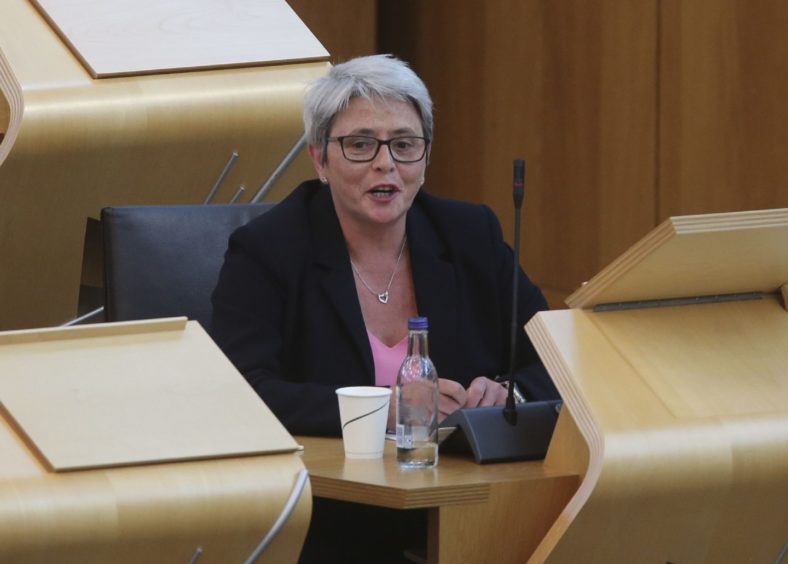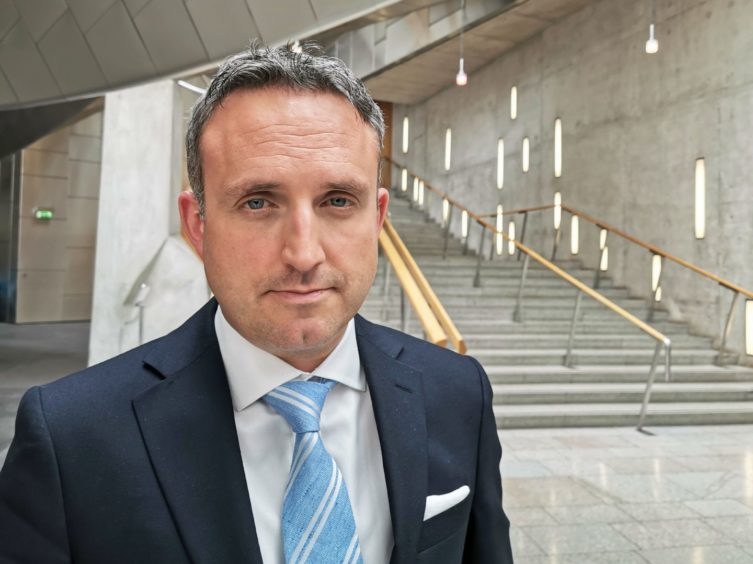The number of drug-induced hospital stays in Dundee is almost double the Scottish average, figures have shown.
Drugs-related hospitalisations rose nationally by 15,000 last year, according to figures released by Public Health Scotland on Tuesday.
The drugs-hospitalisation rate in Scotland now stands at 282 per 100,000 people, up three-fold from 87 per 100,000 people in 1997.
In the Dundee Alcohol and Drug Partnership area, it stands at 531 per 100,000 people.
NHS Tayside as a whole is 334 per 100,000 — still far higher than the national average.
The number of stays in Dundee for a drug overdose is more than double the Scottish figure, at 89 per 100,000 in the last year.
The illicit drug overdose rate was 41 stays per 100,000 population in Scotland.
This rate has increased consistently since 2012-13, at 22 stays per 100,000 population.
The majority of those hospitalised through drug misuse live in Scotland’s most deprived areas.
NHS Fife recorded a higher-than-average hospitalisation rate. NHS Grampian, Orkney and Shetland, Western Isles and Highland all recorded rates well below the Scottish figure.
Fife’s alcohol and drug partnership rate was higher than the Scottish total, at 322 per 100,000.
‘Eye off the ball’
The Scottish Conservative Shadow Cabinet Secretary for Health, Annie Wells MSP, said the rise was a result of First Minister Nicola Sturgeon “taking her eye off the ball”.
Ms Sturgeon made that same remark during a debate in the run-up to the recent election, at which she admitted her government has “taken its eye off the ball” over the country’s shameful drug death crisis.
Ms Wells said: “The number of drug-related hospital stays continues to rise and we already know from experts that the number of drug deaths is, tragically, likely to increase too.
“This is the cost of Nicola Sturgeon ‘taking her eye off the ball’, as she glibly put it.
“Long-term trends reveal an appalling record of failure. Since the Scottish Parliament was formed, drug-related stays in hospital have tripled.
“These figures also make it clear again that the drugs crisis hits communities like mine the hardest.
“If you live in a more deprived area, you are far more likely to end up in hospital from drugs.
“It’s time the SNP Government started listening to those on the frontline and agreed to Scottish Conservative demands for a Right to Recovery, to enshrine in law that people can access the treatment they need to get better.”
Scottish Liberal Democrat health spokesperson Alex Cole-Hamilton said: “These figures show that the damaging legacy of underfunding will see ripple effects for years to come.
“The drugs deaths scandal, sadly, looks set to continue.
“It took too long for the Scottish Government to step up and see the deadly reality of Scotland’s drugs deaths crisis.
“Pathways for support were shut down. People and families have been scarred by these problems and drained by their attempts to seek help at depleted local facilities.
“There will be a legacy of harm for years to come.
“The debate in parliament this Thursday must be used as an opportunity to show that the drift on this key public health emergency is finally at an end.
“We need to see concrete actions, like a Scotland-wide network for the provision of heroin-assisted treatment and a clear commitment to the principle of diversion.
“The new Minister must move quickly to turn this around.”
Government taking ‘range of actions’
A Scottish Government spokesperson said: “We have said a national mission is needed to tackle the drug deaths emergency and we have allocated an additional £250 million over the next five years to improve and increase access to services for people affected by drug addiction – £100 million of this is going towards improving and increasing the provision of residential rehabilitation.
“We are clear that any window of opportunity to engage with people in crisis, including those who have experienced near-fatal overdose, should be explored in order to encourage access to appropriate treatment.
“The implementation of new Medicine-Assisted Treatment (Mat) standards ensure that anyone identified at risk through hospital admission for drug-related harms or near-fatal overdose will be identified and prioritised, and supported into the treatment that is right for them.
“The standards emphasise the importance of giving people an informed choice in the support available to them – an essential part of respecting a person’s rights and dignity.
“We are also taking a range of other actions as part of the national mission including using additional funding to extend outreach initiatives which identify those who are at risk, address their immediate health concerns, and connect them with other community or clinical services for more holistic support.
“We are increasing the provision of Naloxone, a medication that can reverse the effects of opioid overdose and save lives.”


